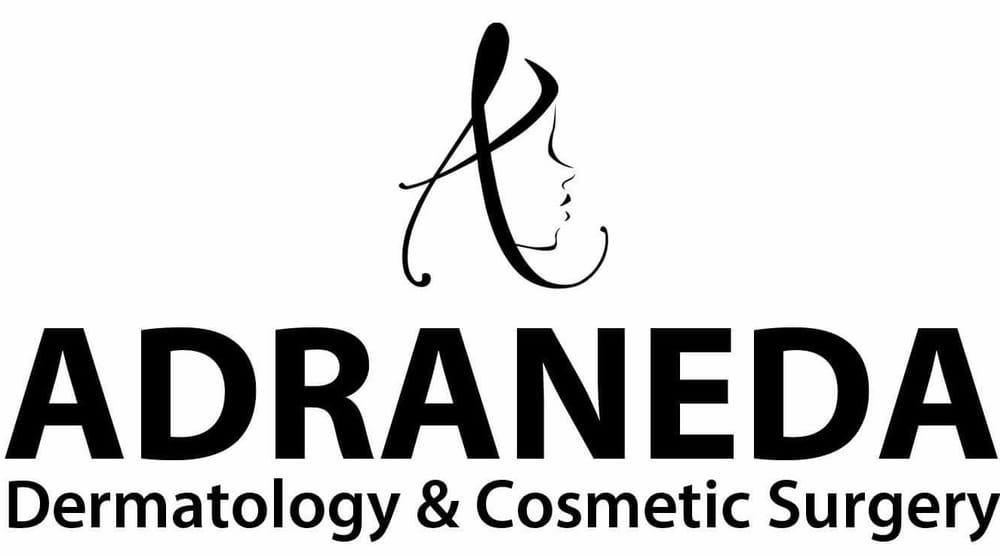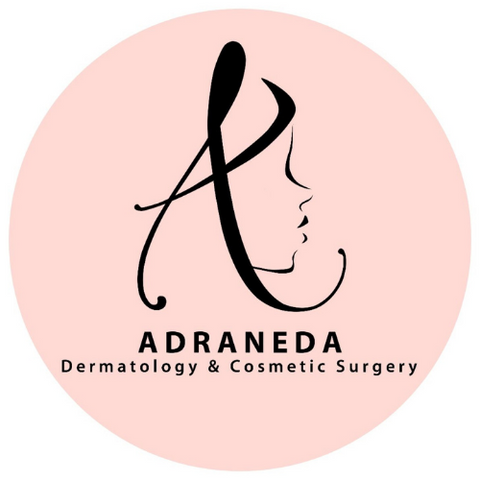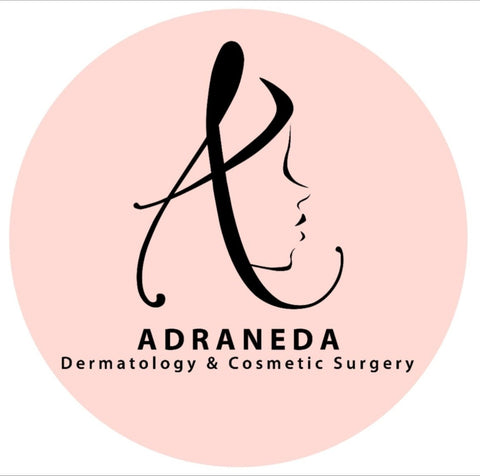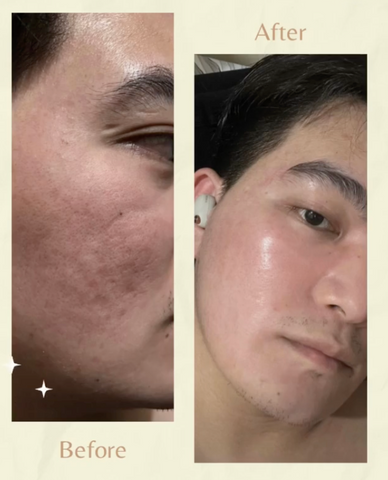
3in1 Synergistic Acne Scar Treatment
3in1 Synergistic Acne Scar Treatment is a combination of 3 of the following treatments: RF Fractional Microneedling, TCA CROSS, Subcision, PRP, Pico Laser
FAQ about Synergistic Acne Scar Treatment

- Boxcar scars - has sharply demarcated vertical edges, flat-bottomed
- Icepick scars - deep and narrow
- Rolling scars - wide with gently sloping edges
The different acne scar types respond to different treatment modalities, that's why we employ our Synergistic Acne Scar Treatment.

It's not enough to do Fractional CO2 laser or RF Fractional laser alone for icepick and boxcar scars because the depth of penetration of lasers may not reach the base of your scars. Most fractional CO2 lasers reach only up to 2mm depth, while RF Fractional Microneedling can reach up to 3.5mm depth. TCA CROSS, being a liquid solution, can settle to the base of your icepick and boxcar scars, giving you better results.

Reference: Bhargava, S., Cunha, P.R., Lee, J. et al. Acne Scarring Management: Systematic Review and Evaluation of the Evidence. Am J Clin Dermatol 19, 459–477 (2018). https://doi.org/10.1007/s40257-018-0358-5
Choose among 2in1, 3in1, 4in1 and 5in1 treatments with base treatment of RF Fractional Microneedling or CO2 Fractional Laser


PRP Biofiller uses a gel derived from your own blood, helping to eliminate the risk of side-effects. It is ideal for vegans or people who suffer from allergies. The gel adds plumpness to areas that have lost volume, while smoothing the appearance of fine lines and wrinkles. It is also used for acne scar treatments to prevent rolling acne scars from coming back. A crucial benefit of this treatment is that it also stimulates the stem cells and growth factors that produce collagen
How is PRP Biofiller different from Hyaluronic Acid Gel Filler?
PRP is all natural with no additives since it is produced on the same time as your treatment. It's volumizing effect softens in 3-6 months, unlike hyaluronic acid filler which lasts for 9-12 months. PROS: more volume of biofillers can be injected under the skin in 1 session, thus more lifting effect and absolutely no allergic reactions since the filler was made from your blood. CONS: since it has no preservatives, it softens in 3-6 months, thus decreasing the effect. The result of the treatment however, will not go back to baseline.
How long does the treatment take to work?
You will notice a visible improvement immediately after the treatment. After two months, the gel is naturally and completely absorbed into the treated area. It is advised to repeat the session after 3 months for continuous improvement.
Q: What is the fastest way to treat rolling scars, deep boxcar scars and volume loss?
- Juvelook is the only one in the world polylactic acid for use in the eye area, mesotherapy of the face, neck and neckline
- its ability to stimulate collagen production in the strongest way and restore youthful appearance in a gradual and natural way.
- no need to massage the post-treatment areas due to the round shape of PDLLA acid molecules and its combination with non-cross-linked hyaluronic acid.
- the durability of the treatment lasts over 24 months from the last treatment. The effect can be sustained by performing 1 reminder treatment after 24 months.
Q: What treatment is recommended for icepick and shallow boxcar scars?
RF Fractional Microneedling or Fractional CO2 Laser with 100% TCA CROSS.
Optional add-ons:
1. PRP
2. Calecim serum
3. Rejuran S
4. Diamond Feel Forte Mesotherapy
5. Exosome
Q. What is the treatment for PIE (Post-inflammatory Erythema)
- Studies have shown that Fractional Microneedling Radiofrequency (FMR/RFM) have a therapeutic effect on inflammatory skin diseases, such as acne and PIE. This is due to the remodelling of the dermal structure and decreased sebaceous gland activity due to the thermal effect of radiofrequency. Thus, with repeated treatments, skin oiliness is also decreased.
"FMR treatment resulted in significant improvements in erythema with
no severe adverse effects. FMR could improve PIE by modulating
inflammatory and vascular components, reduced inflammation, and αSMA staining showed decreased microvessels after 2 sessions of treatment with FMR."
- Min S, Park SY, Yoon JY, Kwon HH, Suh DH. Fractional Microneedling Radiofrequency Treatment for Acne-related Post-inflammatory Erythema. Acta Derm Venereol. 2016 Jan;96(1):87-91. doi: 10.2340/00015555-2164. PMID: 26059315.
Pico laser improves skin texture by minimizing pores, lightening of pigmentations and brightening of skin tone. Our pico laser has a setting for red acne marks, which can improve PIE.
A study by Kim et al showed nearly complete improvement of PIE after 4 sessions of Pico Laser.
- Kim JH, Choe SJ, Kim TG. Post-acne erythema successfully treated with 595-nm picoseconddomain neodymium:yttrium-aluminum-garnet laser. Med Laser 2020;9:84-87
- Pico Laser - has setting for red and brown acne marks. It doesn't only lighten marks but also tightens pores, lessens oiliness and brightens skin
- Dermedics microneedling - Dermedics is a brand that uses botanical products to create their patented serums. They have different serums for different skin concerns. For PIE, a combination of Mesocapil / Meso Ha+C / Mesowhite booster / Mesowhite is recommended. If there are still existing acne, Meso Acne can be added. The serums are absorbed through the skin by microneedling. Results can be seen in 1-2 sessions.
Q: What is RF FRACTIONAL MICRONEEDLING (RFM)?
RFM delivers the desired energy through gold plated insulated needles that penetrate the skin to a predetermined desired depth. By delivering heat energy from RF to dermis, RFM encourages collagen growth and tissue tightening without harming the epidermis.
Radiofrequency Fractional Microneedling helps improve acne scars by producing collagen in the dermis. It also helps improves skin laxity and mild wrinkles.
"The mechanisms involved are neo-collagenogenesis by needle penetration stimulating the release of growth factors and relative sparing of epidermis and adnexal structures which contribute to rapid healing."
(Chandrashekar BS, Sriram R, Mysore R, Bhaskar S, Shetty A. Evaluation of microneedling fractional radiofrequency device for treatment of acne scars. J Cutan Aesthet Surg. 2014;7(2):93-97.)
In 1 study, skin laxity and wrinkles were evaluated after Fractional Radiofrequency treatments and the authors concluded that it is an effective procedure with substantial improvement achieved 3 months post procedure with continued improvement to at least 6 months.
"This clinical improvement is consistent with the timeline for increases in collagen, elastin, and hyaluronic acid and the corresponding volumization, elasticity, and skin laxity improvements previously reported after FRF treatment." (Alexiades-Armenakas M, Newman J, Willey A, Kilmer S, Goldberg D, Garden J, Berman D, Stridde B, Renton B, Berube D, Hantash BM. Prospective multicenter clinical trial of a minimally invasive temperature-controlled bipolar fractional radiofrequency system for rhytid and laxity treatment. Dermatol Surg. 2013 Feb;39(2):263-73. doi: 10.1111/dsu.12065. Epub 2012 Dec 28. PMID: 23278964.)
Q: What is SUBCISION?
Subcision
💉 Treatment: Subcision
👩⚕️ Purpose: Subcision is a minor surgical procedure used for treating depressed cutaneous scars and wrinkles.
🔎 Procedure: Subcision is performed using a special needle or cannula inserted through a puncture in the skin surface. The sharp edge of the needle is used to break fibrotic strands that are tethering the scar to the underlying tissue. The release of the fibrotic strands and new collagen deposition caused by wound healing leads to cosmetic improvement of the scar.
🙋♀️ Patient selection: The decision to perform subcision will depend on the type, location, and severity of scarring; patient preference and expectations; and clinician experience and expectations.
How many sessions is needed? Since rolling scars have a tendency to recur, a minimum of 3-4 sessions is usually advised to make the results more permanent.
Subcision may be used for the treatment of:
• Depressed distensile scars (due to acne, trauma, surgery )
• Depressed bound down scars (due to acne*, varicella(chickenpox), trauma, surgery )
• *excluding deep ice-pick scars
• Acne scars - Rolling scars
❌Subcision may not be suitable in the following circumstances:
• Current or recent (within 12 months) of high dose systemic oral retinoid (eg acitretin, isotretinoin)
• Bleeding or blood clotting disorders (coagulopathy)
• Active bacterial or viral infection
The risks and complications of subcision include:
1. Haematoma due to bleeding (a small haematoma is normal)
2. Pain/tenderness of treated site
3. Infection; this usually presents as localised acneform papule or pustule
4. Temporary post-inflammatory hyperpigmentation(advise sun protection/avoidance)
5. Sub-optimal response or lack of improvement in scarring
6. Injury to nerve or blood vessel, which is most likely in mandibular, temporal and pre-auricular sites
Q: What is TCA CROSS?
TCA CROSS (Chemical Reconstruction of Skin Scars) procedure involves depositing small amounts of high concentration TCA (70–100%) onto the surface of the acne scar. This causes a mild inflammatory reaction resulting in the formation of new collagen fibers.
Most patients require 3 to 6 treatments with TCA CROSS for optimum improvement. Treatments may be repeated at 2 to 8 week intervals over 6 months and may be combined with other treatment modalities for best results.
Q: What is PRP?
PRP treatment or Vampire Facial is the hottest trend in acne scar treatment and skin rejuvenation. It was made popular by Kim Kardashian who underwent the treatment for skin rejuvenation. It involves extracting a small amount of blood from you, which is then spun down in a centrifuge to separate the plasma. This plasma now contains a higher than normal number of platelets and is called platelet rich plasma, or PRP.
Why Platelets Rejuvenate Skin
Platelets are the cells in the blood that help tissue to heal and grow new cells. The PRP, injected into specific areas of the skin, is like a fertilizer that promotes your own collagen to grow, regenerates tissue, and thus acts as to naturally smooth and tighten the skin. In this way, PRP softens wrinkles and creating smoother skin texture and tone.
Q: What is CALECIM SERUM?

Q: What is Rejuran S?
The Rejuran S is an injectable treatment that consists of polydeoxyribonucleotide (PDRN) is a more concentrated version of the Rejuran Healer, which makes it excellent for treating acne scars.
Polyneucleotide chains are DNA fragments that repair damaged dermal (skin) cells and assist in collagen stimulation.
Rejuran S reduces the appearance of acne scarring by inducing collagen reproduction and healing of the skin.
The texture of Rejuran S is more viscous and gel-like compared to Rejuran Healer, and acts like a filler to fill up sunken scars, and at the same time, the rejuvenating properties of Rejuran S will repair the skin at the dermis.
How is Rejuran procedure done?
Rejuran is an injeccted under the scar in the dermis layer. It is best combined with other procedures such as RF Fractional Microneedling or subcision.
Who is suitable for Rejuran S?
Rejuran S is suitable to treat all types of acne scarring, such as box scars, rolling scars, and ice-pick scars.
How often should Rejuran S be done?
3-4 treatments (at 1 month intervals) are recommended for acne scarring treatment with Rejuran S.
For severe acne scarring, we recommend combining Rejuran S with other synergistic acne scar treatments for optimal results.
Are there studies that support the use of PDRN, the main component of Rejuran S?
Ahn KJ, Kim DY, Cheon G, Park HJ, Ahn TH. Polydeoxyribonucleotide and Microlens Array-type, Nanosecond-domain Neodymium:Yttrium-aluminum-garnet Laser Treatment for Scars from Costal Cartilage Harvest Surgery: Case Series of 9 Patients. Medical Lasers 2021;10:90-95. https://doi.org/10.25289/ML.2021.10.2.90
Q: How many SESSIONS of acne scar treatment do I need?
The rate of improvement / number of sessions will depend on several factors like age, skin type, scar type, immunity and home care regimen. For rolling type of scars, improvement is generally seen after 2-3 sessions of Synergistic Acne Scar Treatment, while for boxcar and icepick scars, improvement is normally seen after 3-6 sessions. The more sessions you undergo, the better is the improvement, with up to 90% improvement after completing 5-10 sessions.Q: What is the DOWNTIME of the treatment?
Q: What is the treatment INTERVAL?
Q: How soon can I see results?
Results can usually be seen as quickly as 6 to 8 weeks after the 1st session. For Rejuran S, both short term and long term effects on scar healing and treatment can be observed. The initial effects that patients frequently notice will be smoothness, hydration and glow of the skin. Collagen production usually starts 1 month after the treatment procedure and the patient will then notice gradual and progressive improvement in the scar appearance, reduction in depth and severity of acne scars.
As the best results are seen with about minimum 4 treatments, progressive sessions will further enhance the scar healing and collagen stimulation effects of previous sessions.
Results from acne scar treatment improves further with time. So don't worry if you don't see improvement right away after 1 session of treatment. The more you induce collagen production, the better the results will be.
"Radiofrequency microneedling-induced dermal remodeling and neocollagenesis are slow and progressive but continue to improve even 6 months after treatment."
-Tan MG, Jo CE, Chapas A, Khetarpal S, Dover JS. Radiofrequency Microneedling: A Comprehensive and Critical Review. Dermatol Surg. 2021 Jun 1;47(6):755-761. doi: 10.1097/DSS.0000000000002972. PMID: 33577211.
Q: Can I still undergo treatment even if I'm on Isotretinoin treatment?
YES! This is a excerpt from a study on Acne Scar Treatments:


Reference: Bhargava, S., Cunha, P.R., Lee, J. et al. Acne Scarring Management: Systematic Review and Evaluation of the Evidence. Am J Clin Dermatol 19, 459–477 (2018). https://doi.org/10.1007/s40257-018-0358-5
Q: What SKINCARE REGIMEN do I need after treatment?
- mild cleanser - moisturizing cleansers are adviseable
- Plant stem cell cream (Revitavell or Ivatherm) - helps stimulate collagen production
- CGLOS CEF - vitamin C serum that contains hyaluronic acid, collagen and niacinamide helps prevent pigmentation after TCA CROSS treatment. Vitamin C also aids in collagen production
- Retinoic acid - prevents acneiform eruptions post treatment, micro-exfoliates skin for resurfacing
- Hydrocortisone with erythromycin - anti-inflammatory and antibacterial
- Arnica cream- for bruising
- Calecim serum is also a nice addition to the regimen because it contains animal-derived stem cells.
- Sunblock - apply everyday when in both indoors and outdoors
- apply cold compress during the 1st 24 hours after subcision; then warm compress on the following day
- Use the recommended skincare regimen
- May start applying makeup after 1 week
- May exercise when swelling has subsided
Dont's:
- Rub or use rough towel during the 1st week
- Don't wear makeup or use toners for 1 week or until the scabs have fallen off
- Expose under the sun for long periods of time
- Eat salty and fishy (malansa) when you have swelling
- Don't scratch or rub areas treated with TCA CROSS to prevent premature peeling of scabs.







Q: How much is the treatment?






